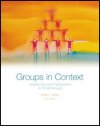 |  Groups in Context: Leadership and Participation in Small Groups, 6/e Gerald L. Wilson,
University of South Alabama-Mobile
Leading Group Meetings
Learning ObjectivesAfter reading this chapter you should be able to:
1.Define and differentiate between these terms: leader and leadership, designated leader and emergent leader. |
 |  |  | 2.Suggest the five sources of power upon which a leader may rely to influence members. |
 |  |  | 3.Describe the process of leader emergence, including the four scenarios suggested by the Bormann research. |
 |  |  | 4.Explain the characteristic features of the following ways of looking at leadership, identify any theoretical explanations connected with each, and suggest the utility each offers to group members: (1) the trait perspective, (2) the style perspective, (3) the situational perspective, (4) the contingency perspective, (5) the functional perspective, (6) the leader as medium, and (7) transformational leadership. |
 |  |  | 5.Specify and explain the characteristics of an effective group leader. |
 |  |  | 6.Recall the five major areas of responsibility that a successful group leader will attempt to manage, and specify how he or she might go about the attempt at management. |
|



 2002 McGraw-Hill Higher Education
2002 McGraw-Hill Higher Education